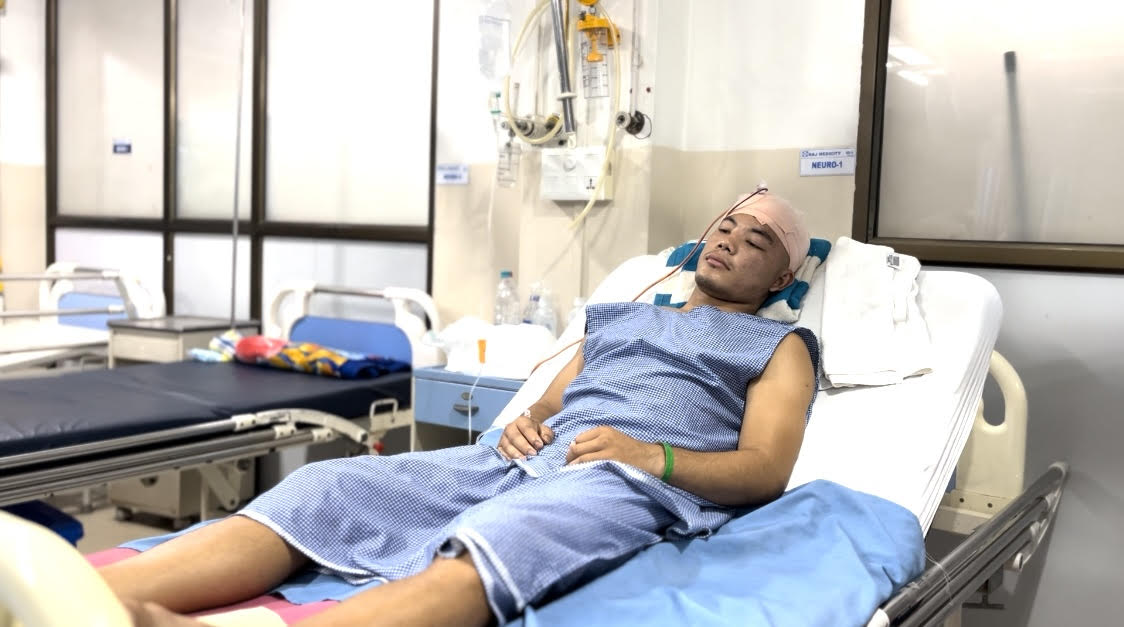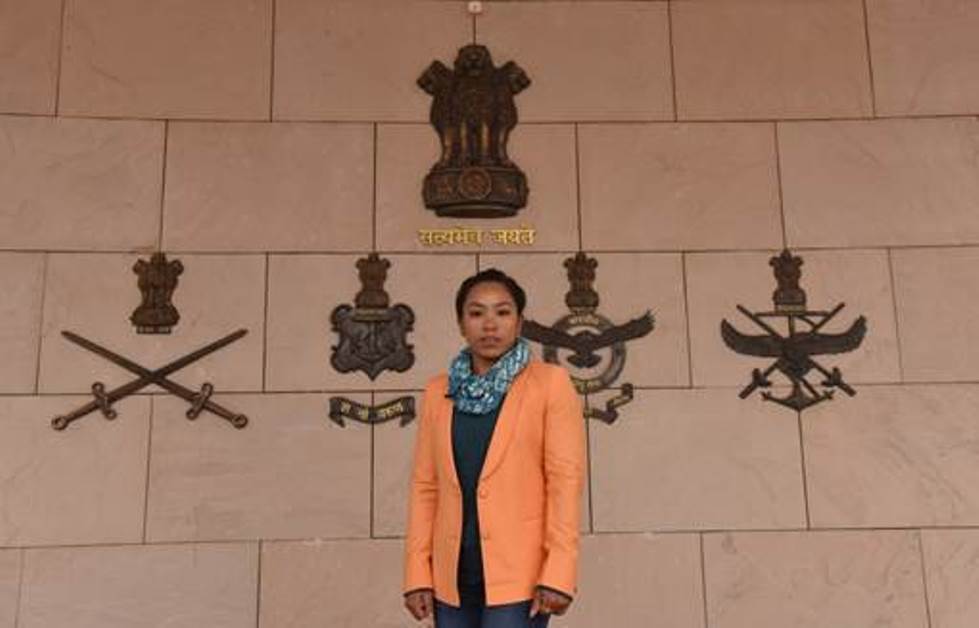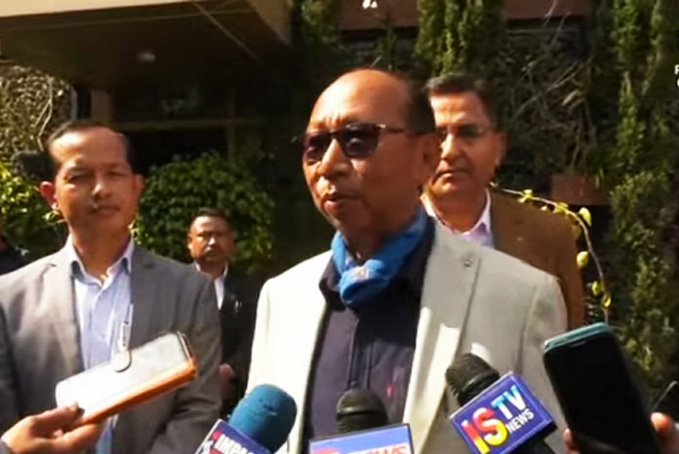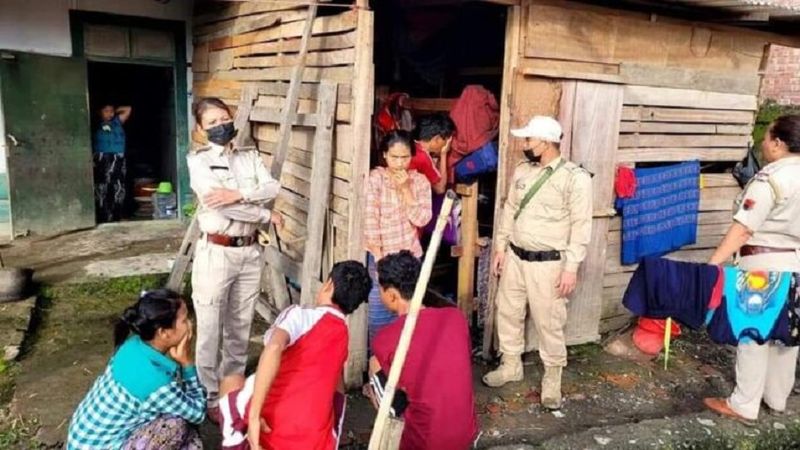This is the first time in the country that pellet guns are used for crowd control on protesting students in uniform, drawing mass condemnation from all over
 KRC TIMES Manipur Bureau
KRC TIMES Manipur Bureau

Waari Singbul Network | 29 Sept 2023
Imphal: At a time when the Indian government is mulling over to replace pellet guns after their non-lethal tags have been questioned, the Central Armed Police Force (CAPF) deployed in Manipur to control the ongoing public protests have used the weapons, inflicting serious injuries to at least 10 students, including minor in uniform.
This is the first time in the country that pellet guns are used for crowd control on protesting students in uniform, drawing mass condemnation from all over. The injured are undergoing treatment at different hospitals in Imphal, drawing a grim reminder of the security forces using the weapons to quell protests in Jammu and Kashmir, killing and maiming many children.
United Nations Secretary General Antonio Guterres, taking serious note of using pellet guns on protestors in J&K, had asked New Delhi to end the use of the weapon. In the UN Report on Children 2021, he called upon the Indian Government to take “preventive measures to protect children, including ending the use of pellets against children…”
During the intense student protests in the streets of Imphal city on Tuesday and Wednesday, the security personnel, particularly the Rapid Action Force (RAF) troopers, fired pellet guns at close range to protestors, inflicting deep pellet injuries to over 10 students.
The uprising erupted after photos of the dead bodies of two teen students who went missing on July 6, this year went viral on the social media. Several students, including minors received multiple pellet wounds on the shoulders, heads, eyes and limbs.

17-year-old, class 12 student, Loitongbam Kishan, was one of the student protesters whose right shoulder was shattered by pellets fired from close range. According to the plastic and reconstructive surgeon Dr Indranil Dutta, Kishan was brought to the emergency ward of the private Shija Hospitals here bleeding profusely and in serious pain. Upon examination, an emergency surgical operation was performed on Wednesday to remove the pellets, as well as to control the bleeding and repair the structure.
“On examination, he has some sort of shoulder dysfunction. On the OT table, we found many muscles which contribute to shoulder function have been severely damaged. There were approximately 90 pellets there. Because these are very small pellets of about 1mm, some are less than 1mm, some were 2mm pellets, it is not possible to remove everything because that may damage the function of the shoulder,” the surgeon said.
“In order to preserve the function of the shoulder I’ve removed around 60 pellets. Rest of the pellets we can take care of later. Right now, bleeding is controlled, the patient is recovering but shoulder function may take 3-6 months’ time to regain,” the doctor added. The surgeon further said the patient is stable but lost a lot of blood and may require blood transfusion.
Narrating the excesses of the security forces leading to his grievous injuries, Kishan said “they started dispersing us using tear gas. I was hiding behind a house. After a while, after the commotion had died down, I came out of the hiding. Just then a RAF personnel came charging in and we were face to face. He then put his gun on my shoulder and shot me.”

Another 20-year-old student protestor, Uttam Soibam who sustained multiple pellet wounds on his head was operated on Friday, at Raj Medicity hospital in Imphal. Surgeons successfully removed over 61 pellets from him and declared him out of danger. However, he would need several surgeries to remove the entire pellets struck on his skull, the doctors said. Soibam, who is a national Wushu player, narrated how he sustained his injury. “That day, we took part in a mob, and after that, the three of us were hiding in a campus of a house. The RAF shot at us from outside the gate.” Recalling the incident, Soibam continued, “I guess they intentionally shot at us. They carried out a search operation, and whoever they suspected, they shot at directly.” Soibam added,“when I got hurt, the owner of the house gave me first aid, but those RAF personnel detained the ambulance for around 30 minutes. Later, with the help of state forces, I was rescued.”
Taking note of the people’s ire against using the weapons, a meeting of senior CAPF officers was convened at Manipur police headquarters here to discuss the fall-out of the current law and order situation on Thursday. “The officers were apprised of the unfortunate injuries of students as well as security personnel. The forces discussed using minimum force in dealing with the public, especially students,” police said.
The police, while appealing to the students “to cooperate with law enforcement agencies in maintaining peace and bringing normalcy back early,” cautioned that “any miscreants taking advantage of the current situation will be firmly dealt by the police,” The joint security forces are making all efforts for expeditious investigation into all the cases, the police added.

Meanwhile, the Manipur Commission for Protection of Child Rights (MCPCR) opined that the strategy and approach for controlling “young students and children protestors must be different from adult protestors.” A general appeal made by the commission said that lathi charge, tear gas, shells and rubber bullets “should not be used arbitrarily and abruptly against the children.” If required, the security forces should use other less injurious means such as repeated convincing warning through loudspeakers, ensuring adequate barricades, water cannon may be an option as last resort, while encountering young children, it said.
“Excessive and disproportionate use of force on children and young students is unbecoming in a democratic country like India, a country which ratified the UN Convention on Rights of the Child and where Juvenile Justice (Care and Protection of Children) Act, 2015 is in force,” it said.
A groundbreaking training manual for Police and Security Forces, Juvenile Justice, Human Rights and decent mob control standard must be introduced, said the commissioner’s chairperson Manibabu Phurailatpam.




